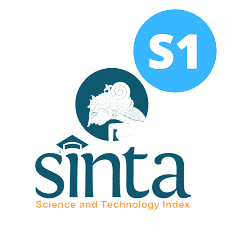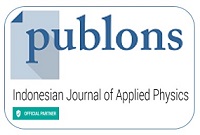Instrumentation and Data-Processing Workflow for AMD Neutralization: Linking Rock Formation, Water-Quality Measurements, and Index Computation
Abstract
We use the Integrated Geo-Hydrochemical Risk Assessment (IGHRA) as a workflow driven by instruments. This workflow connects (i) evidence from rock formations, (ii) repeated water-quality measurements, and (iii) calculations of indices to manage AMD neutralization. The evidence from formations, including sulfide-bearing, quartz/glass-rich, and widely sericitized units, shows why we need CaO to quickly restore pH and precipitate Fe and Mn. Meanwhile, sulfate (SO₄) remains stable and controls overall compliance. We conduct 5 bench tests per condition to assess a series of CaO doses (1–10 g L⁻¹) and a fixed-mass series of CaCO₃ sizes. With CaO, pH increases to about 6.0-6.4 at 10 g L⁻¹. Fe levels drop to about 7-11 mg L⁻¹, Mn to about 0.16 mg L⁻¹, and SO₄ to about 1.7-1.75 g L⁻¹. These changes help quantify the improvements during treatment and reveal the ongoing sulfate load. Indices calculated from post-treatment samples indicate that the PLI(dose) for Fe, Mn, and SO₄ decreases from about 3.2 at 1 g L⁻¹ to about 0.49 at 10 g L⁻¹. At the same time, Residual Risk (RR) falls from about 67% to about 17%. In contrast, the responses from CaCO₃ remain limited by kinetics at low pH, with high indices across different mesh sizes. To turn this chemistry into practical actions, we determine the size of the polishing step using HRT. Existing ponds (about 884 m³) with a flow rate of approximately 0.0256 m³ s-1 provide about 9.6 hours, which is below the target of about 84 hours. A redesigned cell about 10,125 m³ offers around 110 hours for handling solids and buffering performance. Overall, IGHRA transforms treatment-stage measurements into reproducible indices and clear residence-time goals for mine waters close to the surface.
Keywords
Full Text:
PDFReferences
1 Jiao, Y., Zhang, C., Su, P., Tang, Y., Huang, Z., & Ma, T. (2023). A review of acid mine drainage: Formation mechanism, treatment technology, typical engineering cases and resource utilization. Process Safety and Environmental Protection, 170, 1240–1260.
2 Kefeni, K. K., Msagati, T. A. M., & Mamba, B. B. (2017). Acid mine drainage: Prevention, treatment options, and resource recovery: A review. Journal of Cleaner Production, 151, 475–493.
3 Abfertiawan, M. S., Gautama, R. S., Kusuma, S. B., & Notosiswoyo, S. (2016). Hydrology simulation of Ukud river in lati coal mine. Evergreen, 3(1), 21–31.
4 Gwira, H. A., Osae, R., Abasiya, C., Peasah, M. Y., Owusu, F., Loh, S. K., Kojo, A., Aidoo, P., & Agyare, E. A. (2024). Hydrogeochemistry and human health risk assessment of heavy metal pollution of groundwater in Tarkwa, a mining community in Ghana. Environmental Advances, 17(June), 100565.
5 Czajkowski, M., Meade, N., Seroa da Motta, R., Ortiz, R. A., Welsh, M., & Blanc, G. C. (2023). Estimating environmental and cultural/heritage damages of a tailings dam failure: The case of the Fundão dam in Brazil. Journal of Environmental Economics and Management, 121(July).
6 Hakanson, L. (1980). An ecological risk index for aquatic pollution control.a sedimentological approach. Water Research, 14(8), 975–1001.
7 Tomlinson, D. L., Wilson, J. G., Harris, C. R., & Jeffrey, D. W. (1980). Problems in the assessment of heavy-metal levels in estuaries and the formation of a pollution index. Helgoländer Meeresuntersuchungen, 33(1–4), 566–575.
8 Government Regulation No. 22 of 2021 on Environmental Protection and Management. Jakarta (ID): Government of Indonesia; 2021. Indonesian.
9 Canadian Council of Ministers of the Environment (CCME). Canadian water quality guidelines for the protection of aquatic life: CCME Water Quality Index, User’s Manual – 2017 Update. In: Canadian environmental quality guidelines, 1999. Winnipeg: Canadian Council of Ministers of the Environment; 2017.
10 Drinking Water Inspectorate. (2018, August). DWI Compliance Risk Index (CRI): Definition. London: Drinking Water Inspectorate.
11 Chidiac, S., El Najjar, P., Ouaini, N., El Rayess, Y., & El Azzi, D. (2023). A comprehensive review of water quality indices (WQIs): history, models, attempts and perspectives. In Reviews in Environmental Science and Biotechnology (Vol. 22, Issue 2). Springer Netherlands.
12 Akpan, L., Tse, A. C., Dumbari Giadom, F., & Adamu, C. I. (2021). Chemical Characteristics of Discharges from Two Derelict Coal Mine Sites in Enugu Nigeria: Implication for Pollution and Acid Mine Drainage. Journal of Mining and Environment (JME), 12(1), 89–111.
13 Ushakova, E., Menshikova, E., Blinov, S., Osovetsky, B., & Belkin, P. (2022). Environmental Assessment Impact of Acid Mine Drainage from Kizel Coal Basin on the Kosva Bay of the Kama Reservoir (Perm Krai, Russia). Water 2022, Vol. 14, Page 727, 14(5), 727.
14 Marove, C. A., Sotozono, R., Tangviroon, P., Tabelin, C. B., & Igarashi, T. (2022). Assessment of soil, sediment and water contaminations around open-pit coal mines in Moatize, Tete province, Mozambique. Environmental Advances, 8, 100215.
15 Elghali, A., Benzaazoua, M., Taha, Y., Amar, H., Ait-khouia, Y., Bouzahzah, H., & Hakkou, R. (2023). Prediction of acid mine drainage: Where we are. Earth-Science Reviews, 241, 104421.
16 Syaputra, R., Kusuma, G. J., & Badhurahman, A. (2023). Prediction of Potential Acid Mine Drainage Formation in High Sulfidation Epithermal Deposit using Geochemical and Mineralogy Approaches | EKSPLORIUM. EKSPLORIUM, 44(1), 33–40.
17 Andini, D. E., & Gautama, R. S. (2019). Prediction Potential Acid Mine Drainage of Epithermal High Sulfidation Deposits using Static Test. IOP Conference Series: Earth and Environmental Science, 353(1), 012023.
18 National Standardization Agency of Indonesia. (2017). Indonesian National Standard (SNI) 8995:2021 – Methods for sampling water for physical and chemical testing. Indonesian National Standard, 1–27.
19 Brăhaiţa, I. D., Pop, I. C., Baciu, C., Mihăiescu, R., Modoi, C., Popita, G., & Truţă, R. M. (2017). The efficiency of limestone in neutralizing acid mine drainage - A laboratory study. Carpathian Journal of Earth and Environmental Sciences, 12(2), 347–356.
20 Skousen, J. G., Ziemkiewicz, P. F., & McDonald, L. M. (2019). Acid mine drainage formation, control and treatment: Approaches and strategies. The Extractive Industries and Society, 6(1), 241–249.
21 Masindi, V., Osman, M. S., & Shingwenyana, R. (2019). Valorization of acid mine drainage (AMD): A simplified approach to reclaim drinking water and synthesize valuable minerals-Pilot study. Journal of Environmental Chemical Engineering, 7(3).
22 Nguegang, B., & Ambushe, A. A. (2024). Insight into the chemical and biochemical mechanisms governing inorganic contaminants removal by selective precipitation and neutralization in acid mine drainage treatment using MgO: A comparative study. Journal of Water Process Engineering, 59 (August 2023), 104924.
23 Government of the Republic of Indonesia. (2007). Law of the Republic of Indonesia Number 24 of 2007 on Disaster Management. State Gazette of the Republic of Indonesia Year 2007 Number 66.
24 Government of the Republic of Indonesia. (2025). Government Regulation of the Republic of Indonesia Number 26 of 2025 on Environmental Protection and Management Planning. State Gazette of the Republic of Indonesia Year 2025 Number 96; Supplement to the State Gazette of the Republic of Indonesia Number 7113.
25 RoyChowdhury, A., Sarkar, D., & Datta, R. (2015). Remediation of Acid Mine Drainage-Impacted Water. Current Pollution Reports, 1(3), 131–141.
26 Cheong, Y. W., Cho, D. W., Yim, G. J., Park, H. S., Kim, S. J., & Lee, J. H. (2022). Geochemical Assessment of Gypsum Scale Formation in the Hydrated Lime Neutralization Facility of the Daedeok Mine, South Korea. Minerals, 12(5), 1–10.
27 Offeddu, F. G., Cama, J., Soler, J. M., Dávila, G., McDowell, A., Craciunescu, T., & Tiseanu, I. (2015). Processes affecting the efficiency of limestone in passive treatments for AMD: Column experiments. Journal of Environmental Chemical Engineering, 3(1), 304–316.
28 Ministry of Energy and Mineral Resources of the Republic of Indonesia. (2018). Decree of the Minister of Energy and Mineral Resources of the Republic of Indonesia Number 1827 K/30/MEM/2018 on Guidelines for the Implementation of Good Mining Engineering Principles.
Refbacks
- There are currently no refbacks.
















